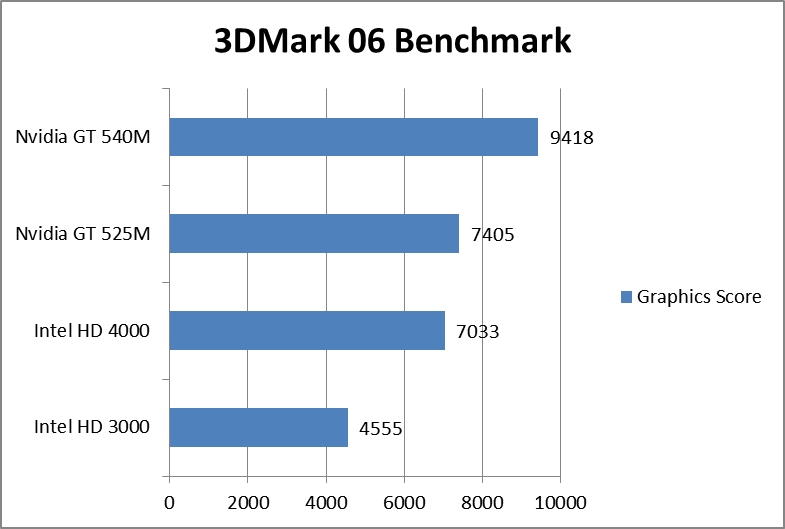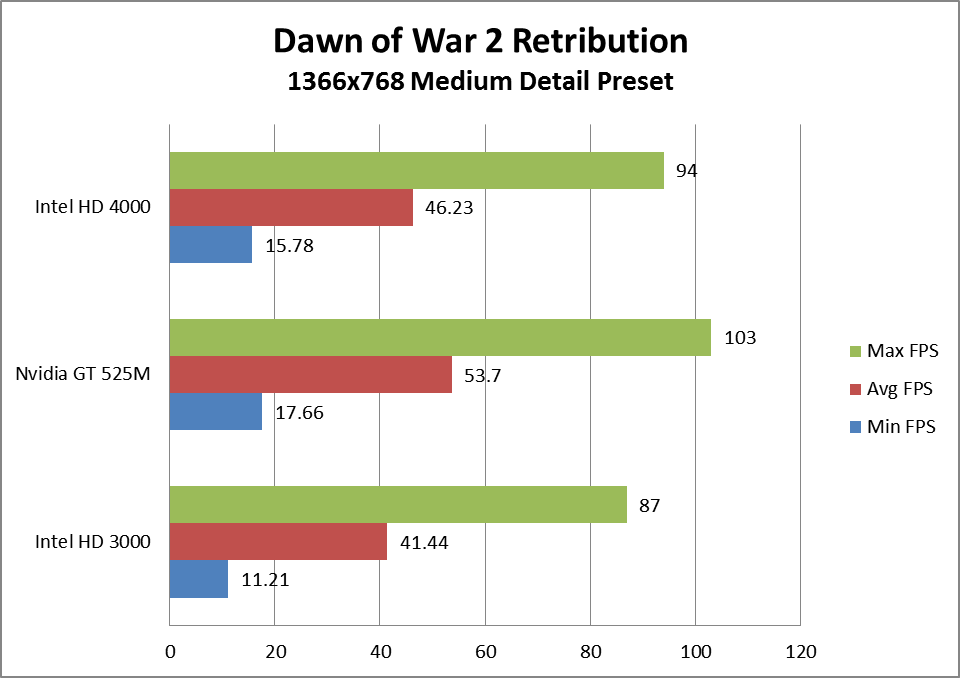Intel has now released its latest rendition of its current processor architecture. Codenamed Ivy Bridge, the CPU portion of the update is modest. It’s still the same architecture as Sandy Bridge, but a new process is being used to make the chips. This allows for a modest performance increase of about 10% to 20% in most benchmarks.
The IGP is a different story. All laptops shipping with new Core i3/i5/i7-3000 series processors will be equipped with Intel HD 4000 graphics. The company has tweaked the architecture and also added four more execution units, upping the total from twelve to fourteen. It’s better, faster, bigger, stronger.
How does that impact performance?
Gaming Performance
The addition of four execution units is significant and suggests, by itself, an increase of about 25%. But Intel is claiming far more than that – official numbers say the improvement should be around 50%. How does this hold up in 3DMark 06?
It turns out that in this benchmark Intel’s claim is conservative. The HD 4000 graphics solution is almost 65% quicker than Intel HD 3000. In fact, HD 4000 is almost on par with the Nvidia GT 525M in this benchmark. That’s not bad at all, is it?
But what about a real world game? Let’s start off by looking at something simple, like Dawn of War 2: Retribution. This is an older title that Intel HD 3000 graphics could handle, albeit with some difficulty.
In this older game we don’t see a huge leap in performance. Intel HD 3000 already does well enough, and Intel HD 4000 simply makes the game a little smoother, adding five frames-per-second to the average. The Nvidia GT 525M proves its worth by adding additional frames on top of that, coming very close to the magical 60FPS mark.
Now let’s consider Just Cause 2. This game is also a couple years old now, but at time of its release it was considered fairly demanding. In early 2011 only dedicated gaming laptops were able to handle it, and Intel HD 3000 always crumbled when faced with its complexity. Has the situation improved?
Damn! The performance of Intel’s new IGP is over twice that of the preceding version, and even the Nvidia GT 525M is unable to keep up. The game is more than playable at these (low detail) settings on any laptop that has Intel HD 4000 graphics. The game experience is smooth and attractive, despite the fact that many graphics features have to be turned off. It’s incredible how far Intel has come over the past two years.
Intel HD 4000 is capable of playing most older 3D titles and many new ones. Even Battlefield 3 can be played at low detail settings with a resolution of 1366×768. If you want a smooth experience in modern 3D titles you still need to upgrade, but players who want to play less demanding games like Diablo 3 and Dawn of War: Retribution should find Intel HD 4000 to be adequate.
Will Intel HD 4000 Play World Of Warcraft?
Yes. Absolutely.
The benefits that you see from World of Warcraft will not be as great as the benefits you see in a game like Just Cause 2. That is because the game, like all MMORPGs, tends to be “processor bound.” The game taxes the resources of your computer processor before the game reaches the limits of what your graphics solution has to offer.
Intel HD 3000 was already capable of handling the game at high detail settings. With Intel HD 4000, high to ultra detail settings should be achievable. Your results will be dictated by the processor as much as the IGP, so if World of Warcraft is your game, I recommend buying a laptop with a fast Core i5 dual-core or a Core i7 quad-core.




You must log in to post a comment.